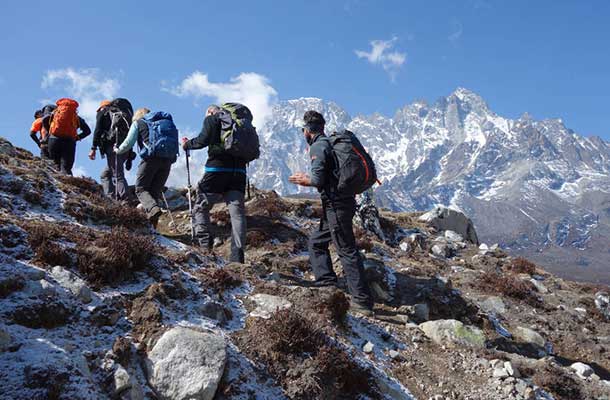Nepal is the country that welcomes thousands of trekkers who solely visit for mountaineering activities. After all, the country is home to eight of the ten world's tallest mountain peaks and there are other beautiful extensive mountain ranges as well. Mount Everest, famous as the highest peak of the world, makes Nepal the country which is inclusive of the highest point on Earth.
Conquering the mountain falls under many people's bucket lists and if it indeed is on your wish-list, here are a few things you will have to know to make your trek a wondrous one!
There are different routes you can take to start your journey to Everest. Your starting points may be Jiri, or Tumlingtar, or Lukla and Namche Bazar. Although these different routes lead you to your final destination, along the way, you will get to experience a variety of communities and places along with magnificent views. There are a lot of stores to buy gears in Thamel, Kathmandu which makes it pretty affordable as well. These affordable and comfortable gears will provide you great protection up in the Himalayas.
Carry Warm Clothes
The wind up there is nasty cold so do not forget to wear some windproof clothes that will protect your lungs. Also wear warm buffs to protect your nose and mouth from frosting. It wouldn't be a good thing to catch a cold up there because it is bound to last for a couple more weeks when you come back down.
Sturdy Shoes are Must
The trail is a rough one (inclusive of melting glaciers, rain, and mud), so you will need a great grip whilst mountaineering. It would be best to wear some high ankle shoes. Make sure to break in your shoes if they're new ones to avoid blisters and aching feet.
Have some Extra Days and Carry Enough Money
The weather up there is pretty dicey and flights may be delayed due to the extreme winds. Thus, you would bear a loss if you had your flight back home the very next day. The last ATM point is in Namche Bazar so make sure to withdraw cash that will be adequate for the next 10 days and for unforeseen circumstances. So, having some extra money and days in handy at the end would be beneficial and a wise decision.
Limit Your Baggage Weight
If you are taking a flight from Kathmandu to Lukla, your main baggage must weigh only 10 kg and your carry bag 5 kg. Though paying for additional baggage can be done, it is not recommended. However, you will have to carry the bag and the hand carries on your own or by the porters throughout the trek.
High Altitude Sickness
A lot of people might have problems with altitude sickness and it'd be a risky decision to continue your journey despite the difficulty. You must inform your people about it and then immediately start heading down.
Food Availability
There are a lot of stops where food is easily accessible as the place is bombarded with tourists every year. Accessibility of meat might be a difficult task, so it'd be better if you could stick to vegetarian meals. However, it would be best if you carried some snacks for yourself as well.
First Aids and Necessary Accessories
Carrying some bandages and medicines to back you up during headaches and altitude sickness can be of great help! Also do not forget to carry some sunglasses, headlamps, toiletries, sleeping bags, power banks, water purification tablets, wet wipes, and a map.
These are some basic guidelines for a safe and convenient trek up to the Himalayas. All of these tips are sure to be of great use when you're conquering the mighty mountains. Anyway, it is always best to be pre-informed than to go through a hassle when you're at an altitude of 8000 meters.
Source - SooperArticles

Comments
Post a Comment